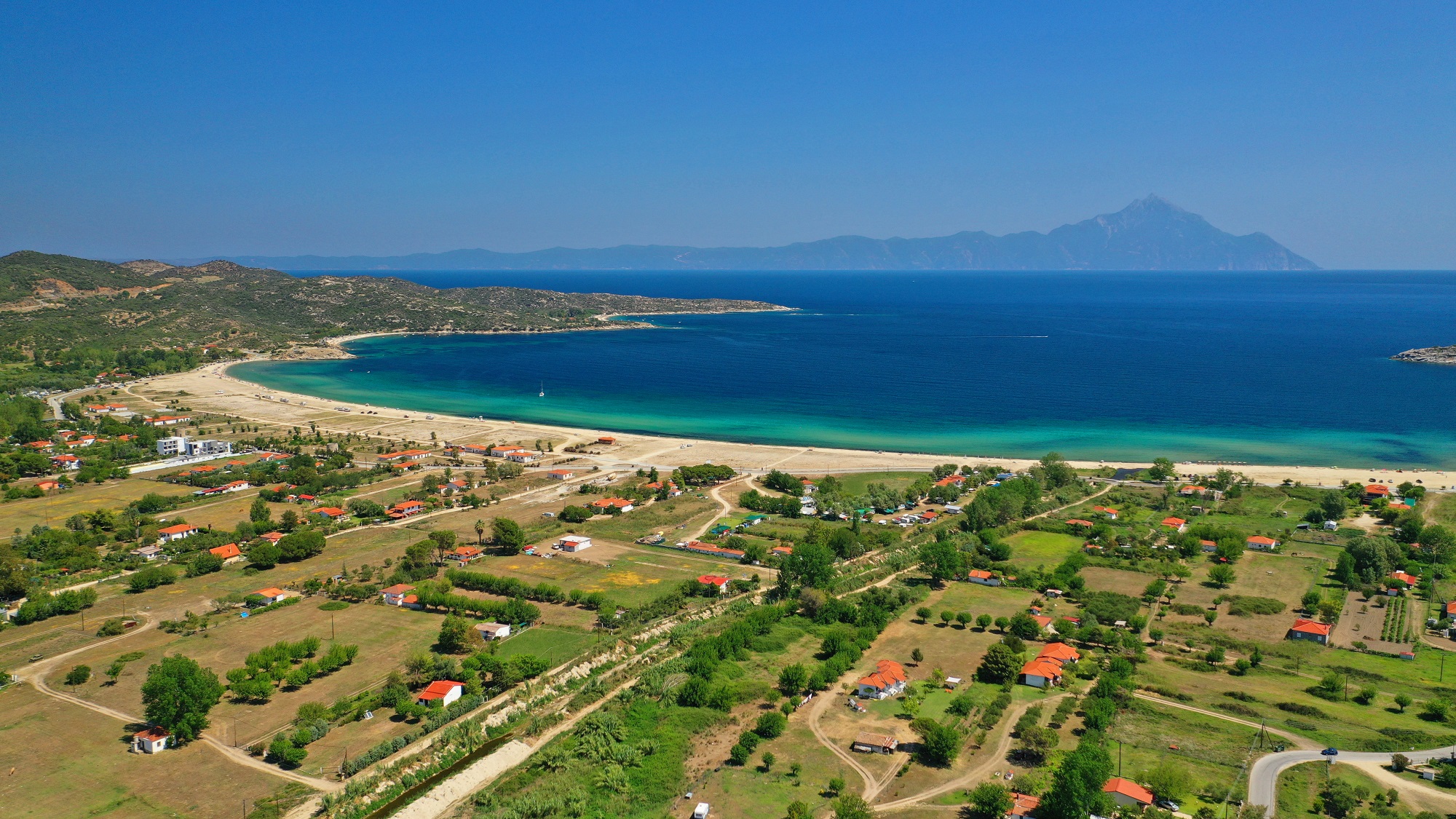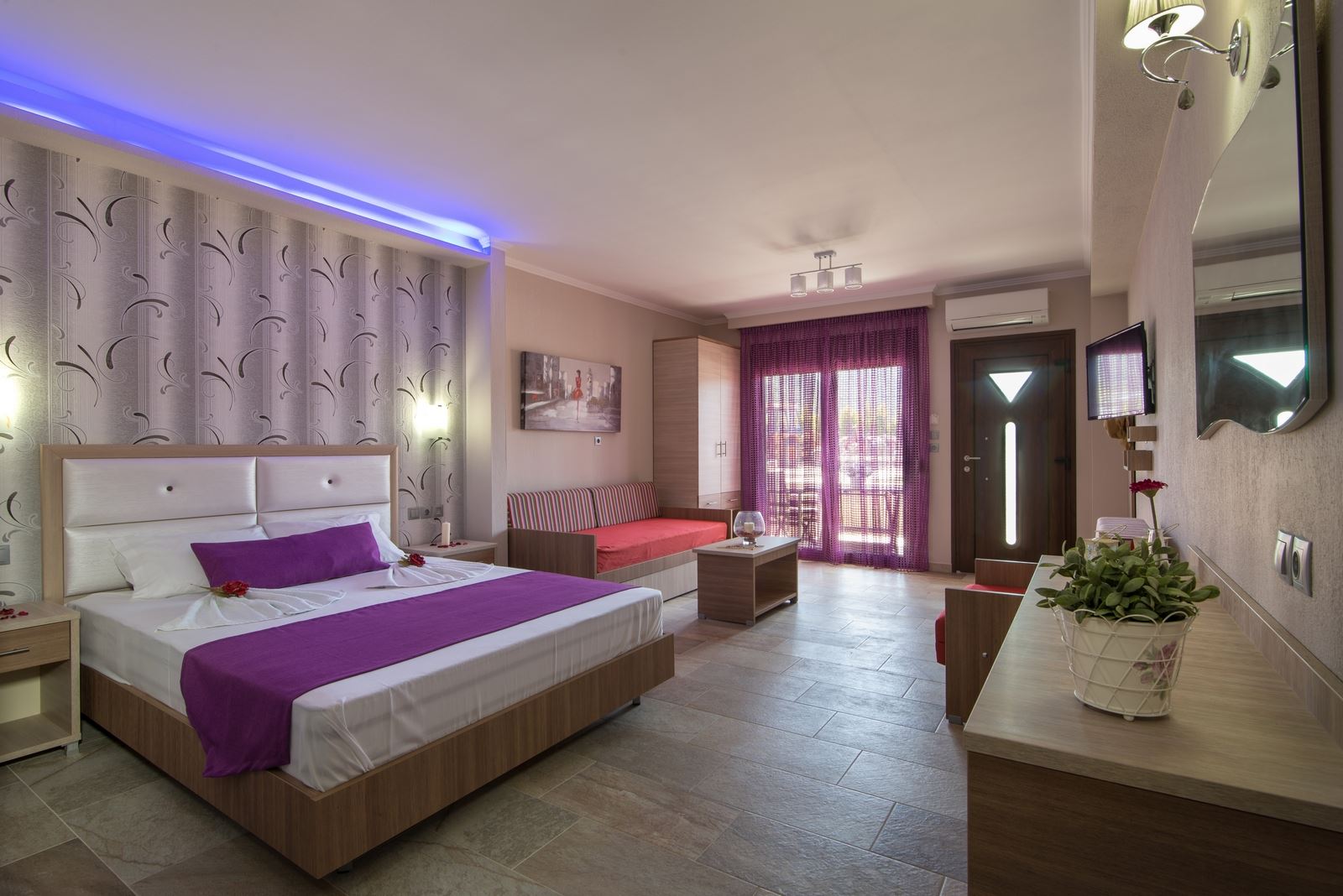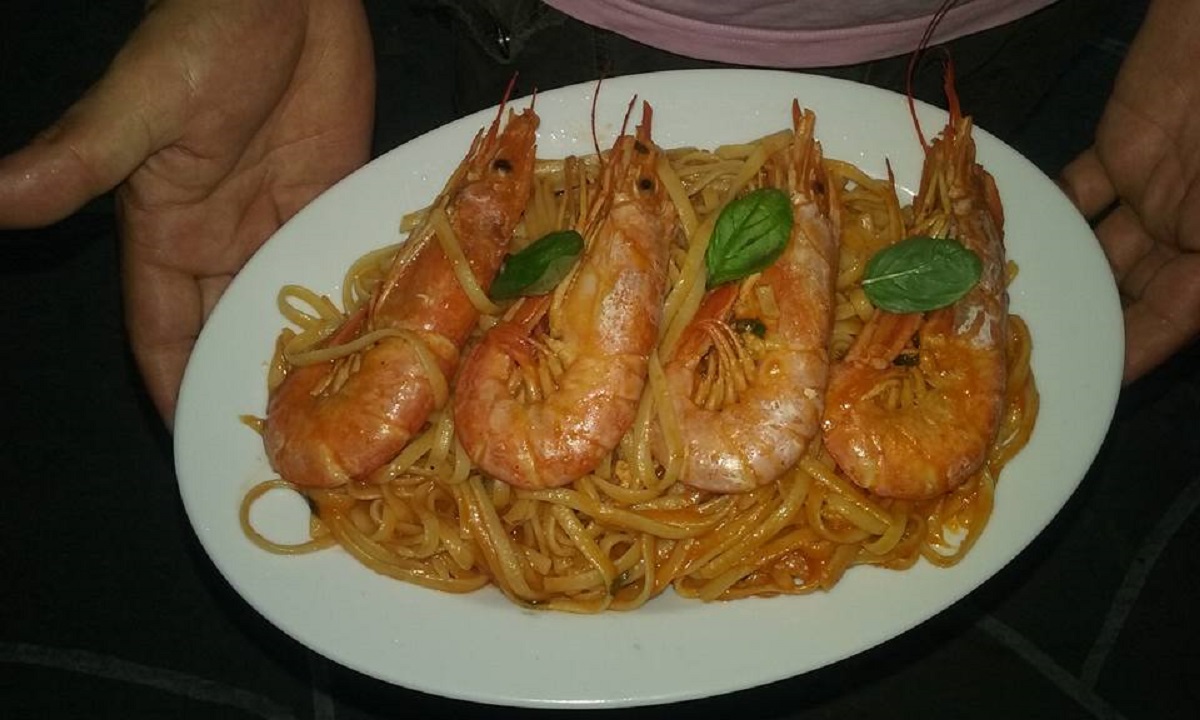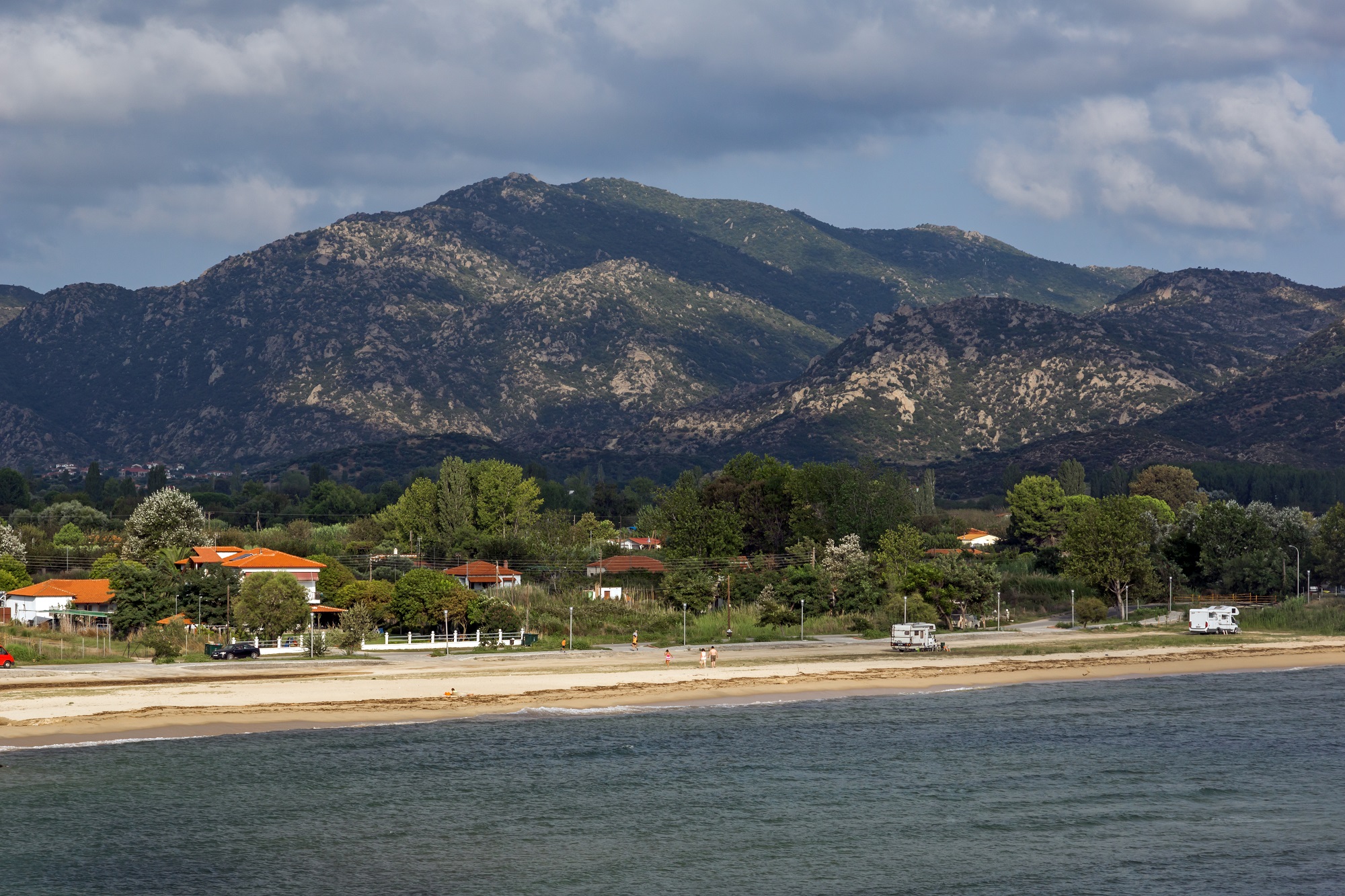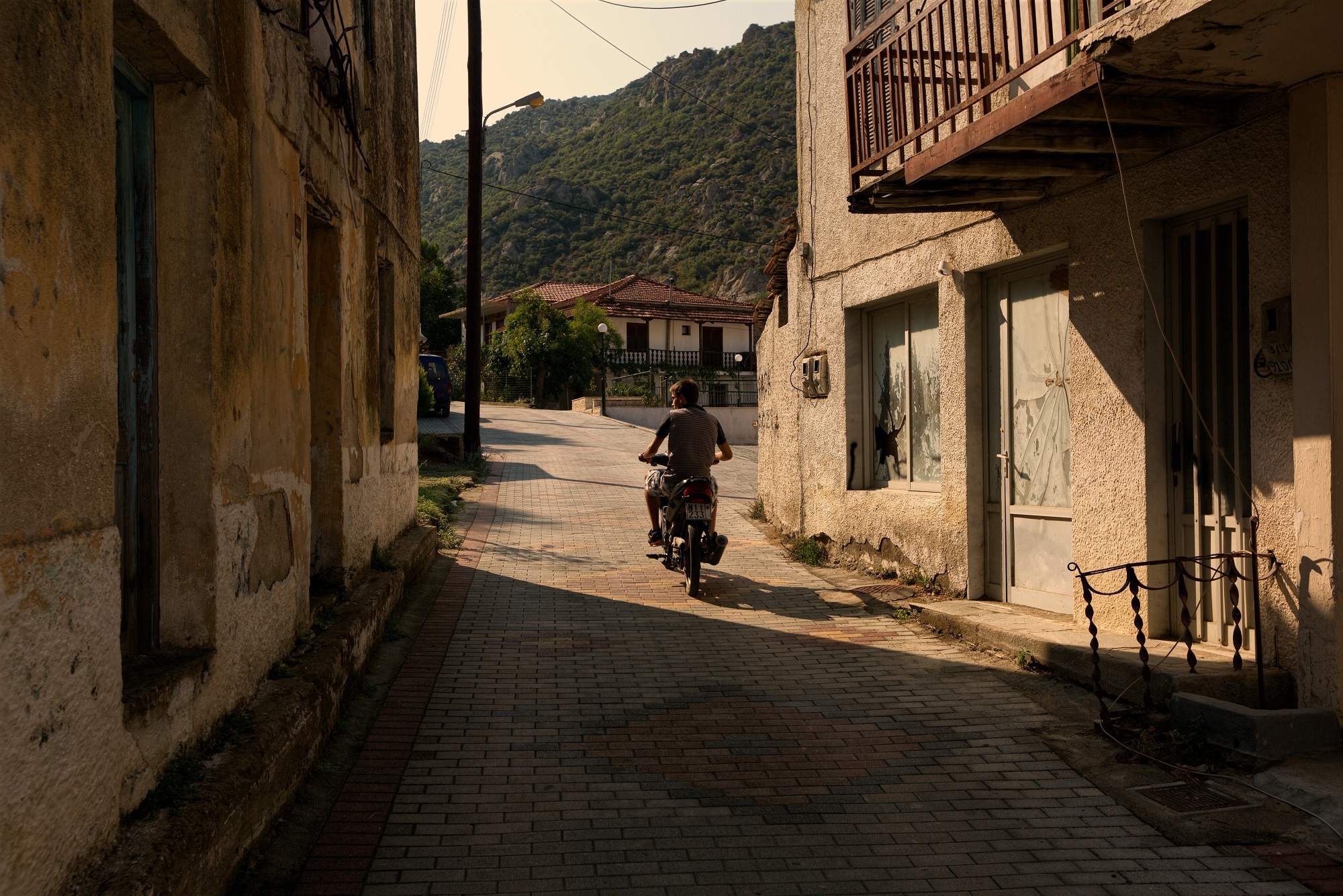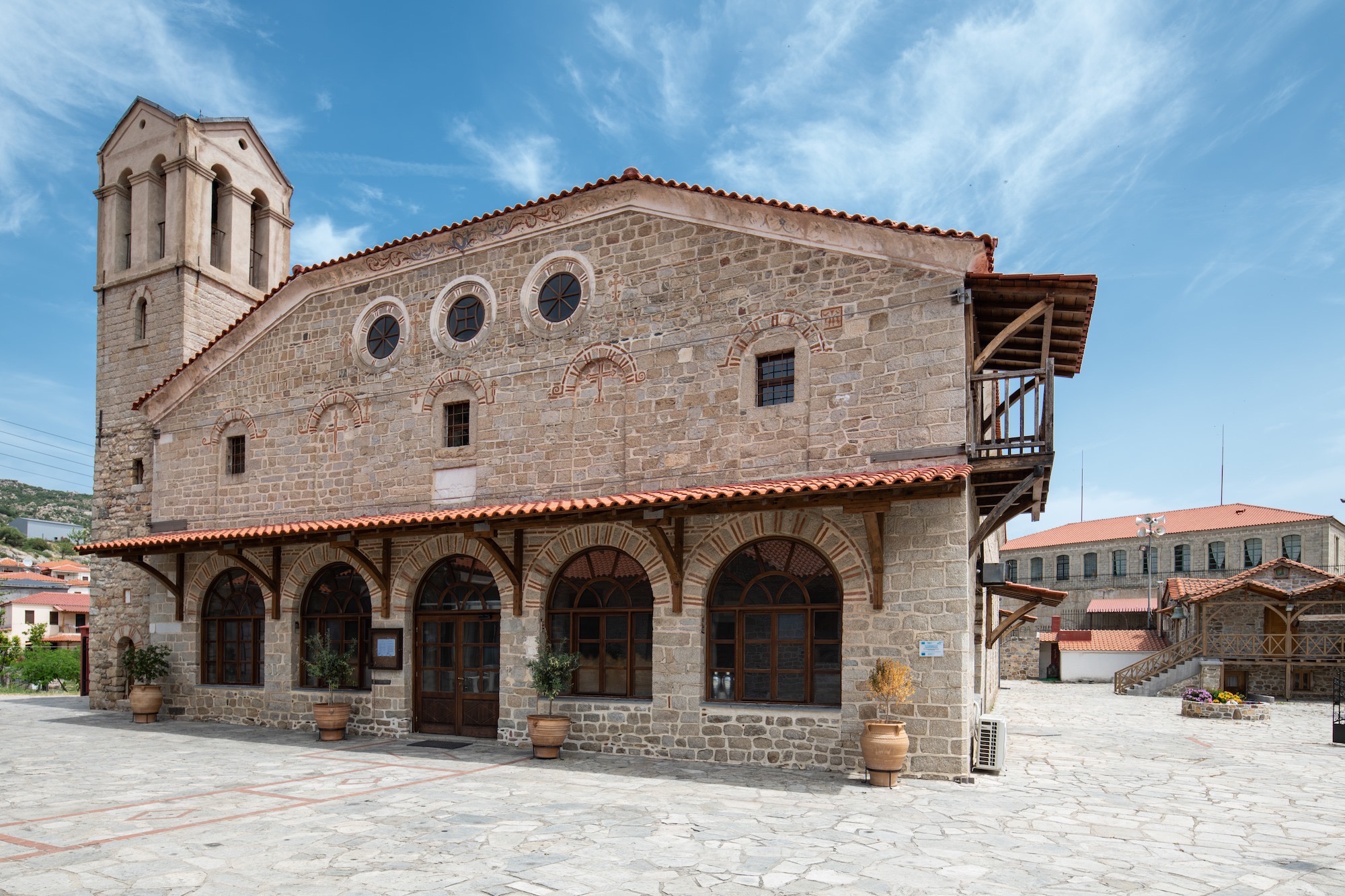Sykia holds a special spot among the many beautiful locations in Halkidiki: it’s the largest, oldest and most isolated town on the Sithonia peninsula (the so-called “middle leg”). In addition, it’s in unique seaside location with a majestic view of Mount Athos.
Built at 40 m altitude, 3 km from an extended coastline that overlooks the Singitic gulf, Sykia has 3,853 residents (according to the 2011 census). Most of them are fishermen, farmers and apiculturists, while in recent years tourism has also entered their lives.
Due to its advantageous location on Halkidiki, and also due to the abundance of mineral resources during antiquity, Sykia was inhabited as early as 1000 BC. In fact, the settlement that was found at Koukos hill appears to have had trading relations even with southern Greece.
The origins of today’s settlement are lost in time and the Byzantine years, when Mount Athos’ monasteries kept land (called metochia) in the area’s fertile valleys. It’s possible that it was first founded with name Longos, already in the 13th century, with connections to the monastery of Megisti Lavra. At the time it was located at the coastal location “Paleohori” from where it was moved to today’s location as a protective measure from pirates. The first certain mention of Sykia dates back to the Ottoman years (1521) while it is described as an organized settlement in a 1569 document. According to tradition, it got this name (Sykia means fig tree in Greek) because it was built around an old fig tree.
Already from the early 18th century, Sykia had become one of the regions with the largest agriculture sector making it an important financial and administrative centre. In 1821, it participated in the War of Independence, however the revolt was not successful in Macedonia, while it was the centre of the, also failed, Macedonian Rebellion of 1854. The village would be liberated in 1912, during the First Balkan War.
Where to stay
Just 1,2 km from the nearest beach (about 15-minute-walk), “Anthemida Rooms” is known for its beautiful rooms and its sunny garden. It also has a small playground, ideal for families with children.
The small but great hotel “Nefeli Studios” is also near the sea, and it too is great for families with children. Another great choice is “A Ponte Studios & Apartments” that also has a playground, while it’s just an 18-minute-walk from the nearest beach.
Apart from the above, there are more choices either near the beach or in town.
Where to go for a coffee and/or a drink
“Manhattan”, in the centre of the town, is a café-bar with a following, as is “ Café Bar Queen”. “Dream” and “River” are great choices both during the day and for a night outing.
The beach bars on the nearby beaches are mostly closed during the winter.
Where to eat
A stone’s throw from the main square, “Mimoza” is a tavern with local tsipouro (traditional pomace raki). Heading towards the beach Pigadaki, you’ll come across “Zambakos” – a great choice in the area if you like sea food, known for its shrimp pasta.
We also recommend visiting “Akrogiali” on Linaraki beach, as the owner is a fisherman so it’s not unusual for customers to eat something that he’s just caught. A popular choice among the locals is “Kentro Igias”, in town, and it often has live rebetiko / popular music. While if you’re craving souvlaki, look for “Kazakas”.
3 things worth doing if you’re in Sykia
The tourist development of Sykia is based on its gorgeous coastline and the amazing turquoise waters of its beaches, so most visitors come in the summer. But, due to its location in Sithonia, on the foothills of verdant hills, it’s also a perfect destination for every season. In addition, it’s great past ensures that there are more things to do and see apart from the sea and the view of Mount Athos.
Walk around the old quarter
The long history and the great past of Sykia as a trading and administrative centre in Sithonia is reflected in the so-called “old quarter”.
A walk around its narrow alleys will take you back to the 19th century, when the area was still under Ottoman rule. Here most houses remain in their original state, opening a picturesque “window” towards a long and very different past. In terms of architecture, these buildings maintain elements of the traditional monastic architecture that was dominant in the area at the time, due to its proximity to Mount Athos.
See the Agios Athanasios church
Dating back to 1819, the church of Agios Athanasios is located in the centre of the old quarter of Sykia. It’s a three-aisled basilica with a wooden roof built by highly-skilled craftsmen who were invited to the village from Zoupani, Kozani.
In 1821, due to its participation in the War of Independence, Sykia was attacked by the Ottoman army, and that resulted in a significant part of the church being burned. When peace returned, the monasteries of Mount Athos helped the residents with its repairs. The church was burned again during the Macedonian Rebellion of 1854, and it was rebuilt in 1861.
Visit the Old School
The locals call it “Sykia’s Parthenon” due to its neoclassical features. It was built in 1870 at a prominent, central location, on a small hill, with the intention of becoming the primary school.
It’s a work by prominent architect Xenofontas Paionidis who built it using local grey granite and who designed the neoclassical decorative elements. Thanks to these, the School has become known as one of the most impressive late 19th century buildings in Halkidiki.
Read also:
Halkidiki: Ultimate Greek summer destination also terrific in winter
Halkidiki: products to take with you before you leave
Halkidiki after the summer -A tour of its hospitable verdant mountains



